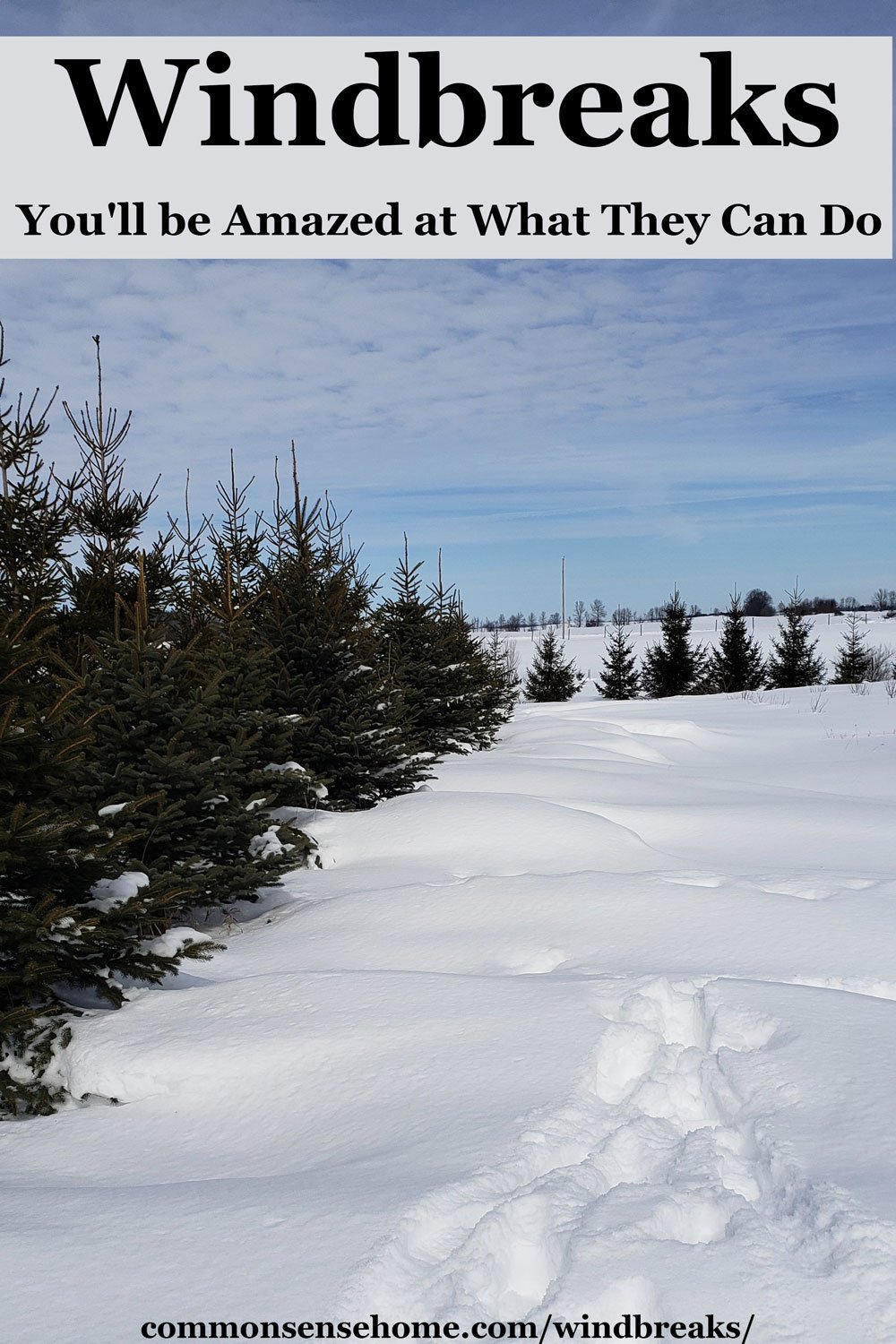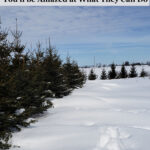Windbreaks – You’ll be Amazed at What They Can Do
This post may contain affiliate links. Read my full disclosure here.
Windbreaks can provide amazing benefits – blocking cold winter winds and reducing wind erosion, moderating temperature and humidity, providing wildlife habitat, and more. We’ll share the the basics of how they work and why they make a great addition to larger yards and homesteads.
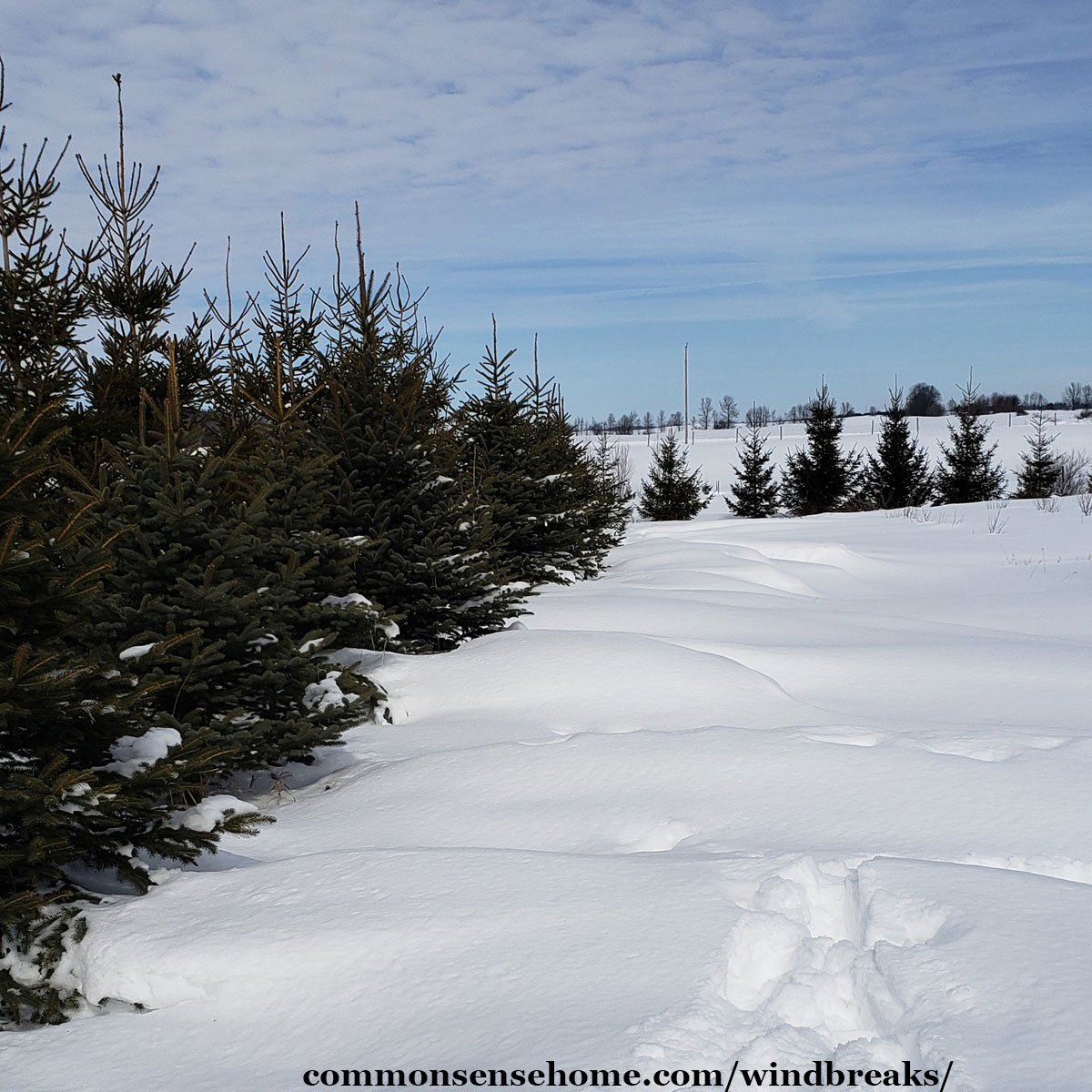
What is a windbreak?
A windbreak is a barrier that reduces and/or redirects wind. A simple windbreak can reduce a 20 mph wind to 5 mph, but wind is not stopped completely.
Our focus in this series is living tree lines, also known as shelterbelts or hedgerows. This is planted perpendicular to the prevailing winds.
Temporary snow fences, solid rock, wood, permanent fences, buildings, earth berms, swales and other manmade structures also influence air flow and create microclimates. Learn more about how to use these microclimates in your garden here.
A windbreak creates a protected area stretching 10 to 30+ times the windbreak height downwind. It also slows creates a small protected area on the windward side. (See diagram below.)

For instance, a 5ft (1.5m) snow fence creates a well protected area 50ft (15m) to 75ft (22m) downwind of the fence. The amount of protection decreases till approximately 1500ft (457m), where winds are once again at normal speed. A 60ft tall living windbreak with evergreen trees protects an area of roughly 1800 feet (548m) downwind.
The size of the protected area also varies with the density of the windbreak and local topology (lay of the land).
If you have blue spruce which grow 50 to 75ft and are dense, the maximum protected area would be from 1500ft to 2250ft downwind. White pine are 50 to 80 feet giving a maximum 1500ft to 2400ft downwind microclimate area.
Though evergreen trees are the most common, you can use a variety of trees and shrubs. You need 4 or more rows of deciduous to equal one or two rows of evergreen to create the same wind block density.
Types of Windbreaks
Windbreak “type” refers to the primary focus of the planting, though one planting often provides many different uses.
Field windbreaks protect crops and open fields. They reduce soil erosion, shelter growing plants, feed pollinators, and enhance overall soil and water health. As they collect and deposit snow downwind, they can help to increase spring soil moisture, a benefit in dry areas.
Livestock windbreaks focus on improving conditions for livestock by providing shelter and sometimes forage. From shade in summer to reduced wind chill in cold weather, trees reduce livestock stress and improve carbon cycling.
On the homestead or large yard, trees and shrubs can reduce heating and cooling bills, help to keep drifting snow off driveways, and create a more pleasant outdoor environment.
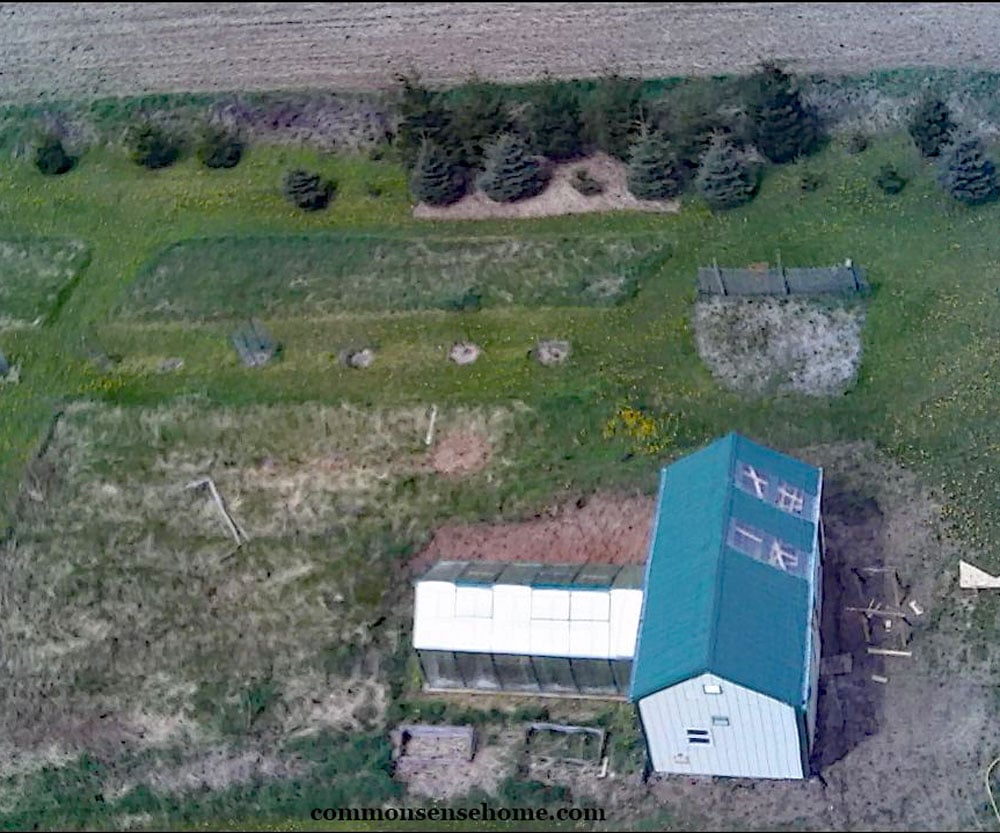
Benefits
There are many windbreak benefits, depending on the location, species planted, and utilization. They can be aesthetically pleasing, and can add visual interest and diversity to a landscape.
Saves Money (and You May be Able to Get the Plants for Free)
Windbreaks cuts costs by reducing heating costs in the winter and cooling costs in the summer. A home protected by a windbreak uses 10 to 20% less energy.
There is also less cost for watering the yard, gardens, trees, and crops. Mature plantings help protect buildings and livestock from costly wind damage. They can also increase the life of fences and buildings by protecting them from the wind.
Would you like to save this?
In some cases, shelterbelt trees and shrubs qualify for grant money and/or tax credits. Contact your local soil conservation service for information on resources in your area. They may also be able to help you with design and planting recommendations.
Temperature and Moisture Moderation
Tree lines moderate temperature, making it more comfortable on hot or cold days. They can lower air and soil temperature from 1.7 °F (or 0.7 °C) to as much as 7° F (4 °C) in the daytime, and increases air and soil temperature up to 2 °F (1 °C) up to 7 °F (4 °C) at night.
The combination of temperature moderation and reduced wind speed decreases the risk of frostbite for people and animals. Note: A 60% dense or better, tree line is needed to protect humans and animals.
Shelterbelts also increase humidity from 2% to as much as 10%, and reduce evaporation related to the wind.
The video below shows how the different sections of our windbreak handled a recent snowfall with high winds.
Plant Protection
Shelterbelts reduce wind damage and increase garden and crop production. Before our tree line matured, we had a serious summer storm that flattened our gardens. Now the mature trees protect the gardens and reduce frost damage to trees and shrubs.
Windbreak sheltered soybean crops yields in southwestern Ontario were 25% higher. Corn yields were 6% to 8% higher. In orchards, there’s less fruit damage and improved pollination.
The protected area downwind of the tree line becomes a microclimate. The increased moisture, moderated air and soil temperature, and wind reduction all improve growing conditions.
For planning purposes, the shift is roughly ½ USDA zone warmer. For example, if you live in Zone 5b, you can move your garden to 6a. In hot weather climates, you may be able to use the shaded areas to grow plants that prefer cooler temps.
Reduced windspeed also means reduced soil erosion. Our topsoil is being depleted at an alarming rate, so strategies that reduce erosion are critical to soil health.
Creates Habitat for Wildlife and Pollinators
A well designed windbreak can be an oasis that pays off summer and winter. It creates an area for small animals and beneficial insects. This can be protection for wild birds, domestic poultry and even livestock.
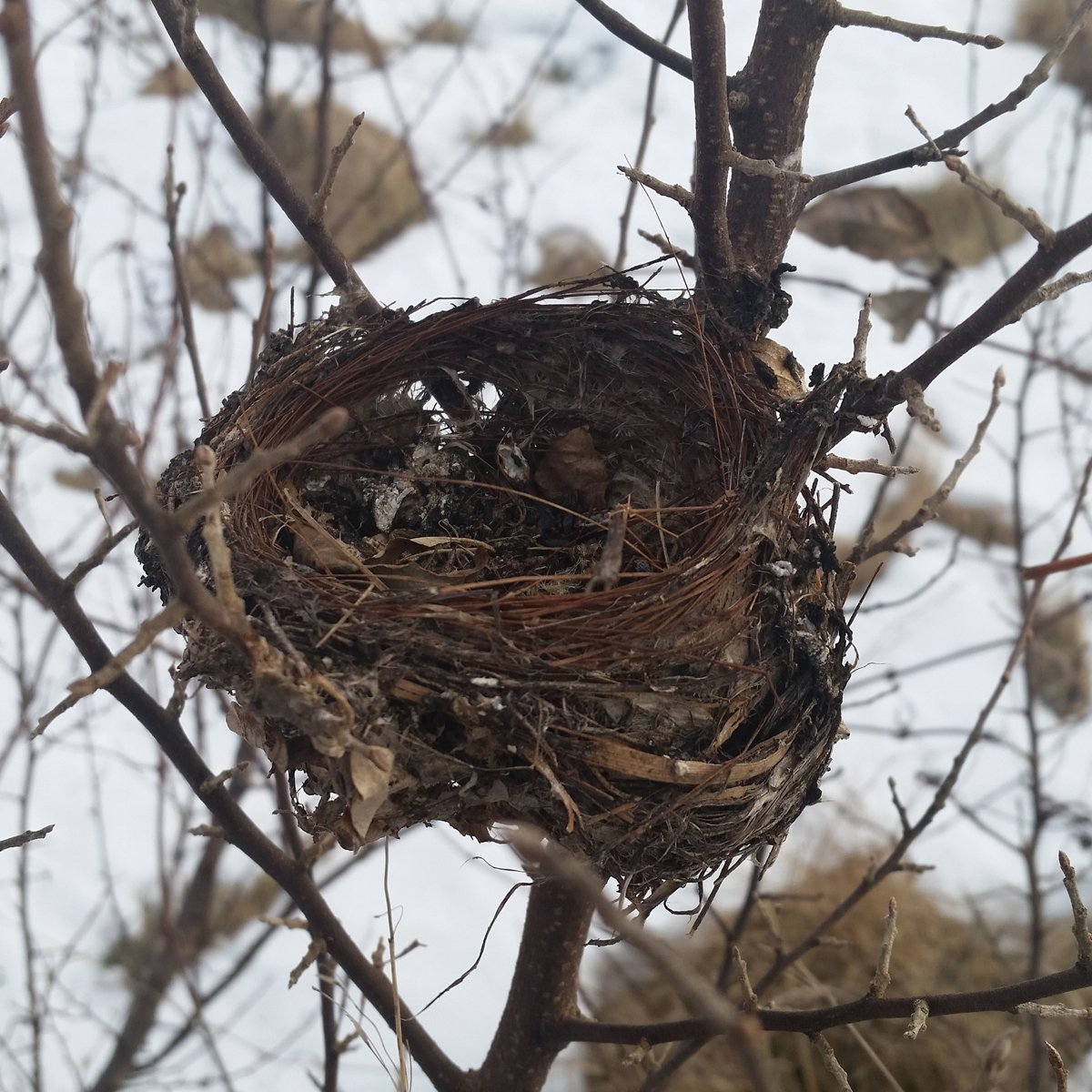
The undisturbed soil under the plantings is a good location for ground nesting native bees like bumblebees. Reduced wind speeds make it easier for pollinators to move from flower to flower. The trees and shrubs also offer an additional food source. Our honey bees often come home covered with deep yellow spruce pollen from the tree line in early spring.
Windbreaks can be an integral part of a food forest. Food forests combine trees, shrubs, and other plants to produce a diverse range of food and other products.
Improved Privacy, Air quality, and Noise Control
A good windbreak tree line provides visual privacy and improves property value. Including roses and other thorny plants creates a hedgerow that cuts down on trespassing and larger animals getting through.
Windbreaks can help to improve air quality by intercepting dust and other particles that are carried by the wind. Trees also help to clean the air, and add their own pleasant fragrance to the surrounding area.
The trees or other plants in the windbreak can absorb and deflect sound waves, reducing the intensity of the sound and making it less audible on the other side of the windbreak. This can be especially useful for reducing noise pollution in urban areas or along busy roads.
